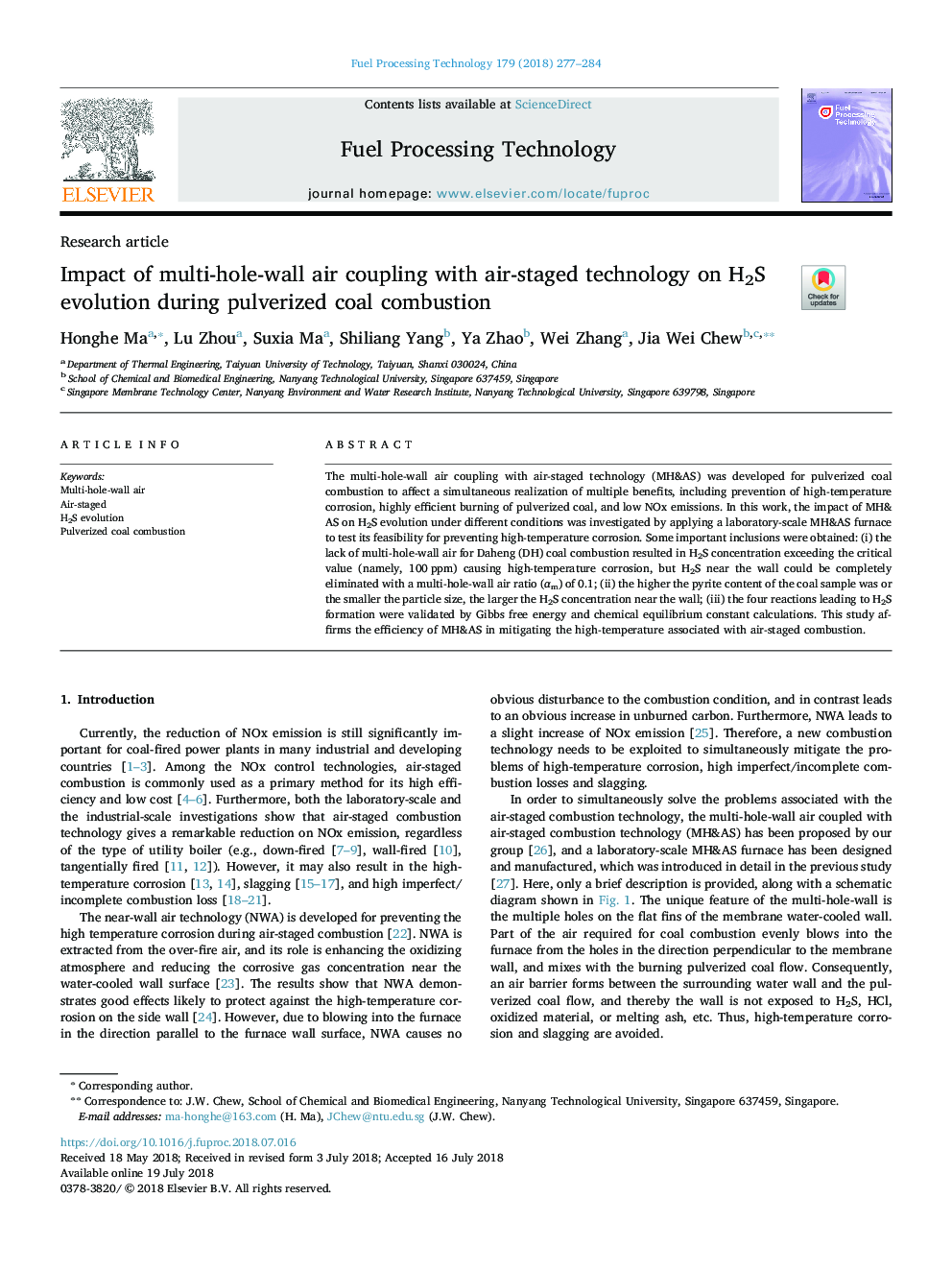| Article ID | Journal | Published Year | Pages | File Type |
|---|---|---|---|---|
| 11000596 | Fuel Processing Technology | 2018 | 8 Pages |
Abstract
The multi-hole-wall air coupling with air-staged technology (MH&AS) was developed for pulverized coal combustion to affect a simultaneous realization of multiple benefits, including prevention of high-temperature corrosion, highly efficient burning of pulverized coal, and low NOx emissions. In this work, the impact of MH&AS on H2S evolution under different conditions was investigated by applying a laboratory-scale MH&AS furnace to test its feasibility for preventing high-temperature corrosion. Some important inclusions were obtained: (i) the lack of multi-hole-wall air for Daheng (DH) coal combustion resulted in H2S concentration exceeding the critical value (namely, 100â¯ppm) causing high-temperature corrosion, but H2S near the wall could be completely eliminated with a multi-hole-wall air ratio (αm) of 0.1; (ii) the higher the pyrite content of the coal sample was or the smaller the particle size, the larger the H2S concentration near the wall; (iii) the four reactions leading to H2S formation were validated by Gibbs free energy and chemical equilibrium constant calculations. This study affirms the efficiency of MH&AS in mitigating the high-temperature associated with air-staged combustion.
Keywords
Related Topics
Physical Sciences and Engineering
Chemical Engineering
Chemical Engineering (General)
Authors
Honghe Ma, Lu Zhou, Suxia Ma, Shiliang Yang, Ya Zhao, Wei Zhang, Jia Wei Chew,
